Discover 20 hidden attractions, cool sights, and unusual things to do in Halle (Germany). Don't miss out on these must-see attractions: Moritzburg, Marktkirche Unser Lieben Frauen, and Handel House. Also, be sure to include Wilhelm Friedemann Bach House in your itinerary.
Below, you can find the list of the most amazing places you should visit in Halle (Saxony-Anhalt).
Table of Contents
Moritzburg
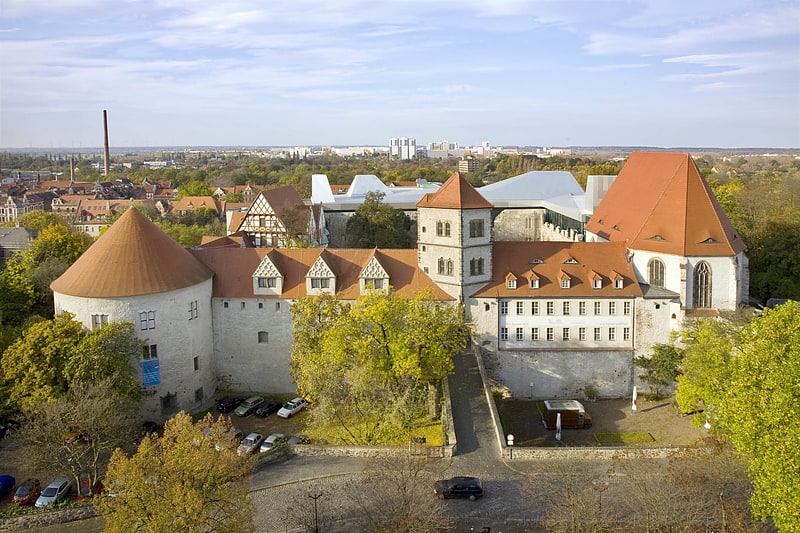
Art museum in a modern castle conversion. The Moritzburg is a fortified castle in Halle, Germany. The cornerstone of what would later become the residence of the Archbishops of Magdeburg was laid in 1484; the castle was built in the style of the Early Renaissance.
Since the end of the 19th century it has housed an arts museum which is recognised as being of national importance.[1]
Address: Friedemann-Bach-Platz 5, 06108 Halle (Saale) (Stadtbezirk Mitte)
Marktkirche Unser Lieben Frauen
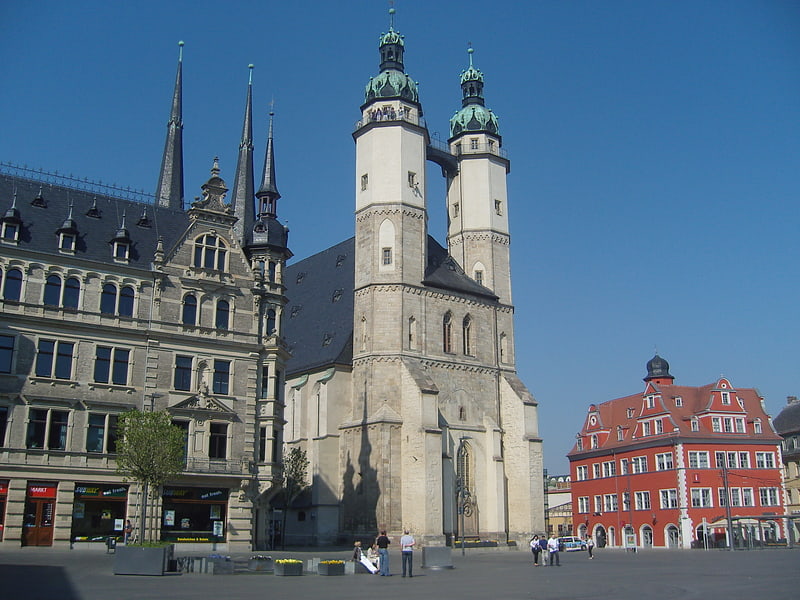
Building in Halle, Germany. The Marktkirche Unser Lieben Frauen is a church in the centre of the city of Halle, Saxony-Anhalt, Germany. It was built between 1529 and 1554 and is the most recent of the city's medieval churches. In German, its official name is shortened to Liebfrauenkirche but it is also referred to as Marienkirche and the Marktkirche.
The church replaced two former churches in the market area, their towers were integrated into the new building. The Market Church is considered one of the most important buildings of the late Gothic period in central Germany. Its four towers, together with the Red Tower, are the landmark of the city, hence its nickname "Stadt der fünf Türme" (City of the Five Towers).
Justus Jonas introduced the Reformation into Halle, and his friend Martin Luther preached in the church. George Frideric Handel was baptized here and received his first organ lessons. Johann Sebastian Bach inspected the new organ, and his son Wilhelm Friedemann Bach was an organist. The beginnings of both pietism and Enlightenment were connected to the church. Little damaged in World War II, the church is today a historic protected monument.[2]
Address: An der Marienkirche 2, 06108 Halle (Saale) (Stadtbezirk Mitte)
Handel House
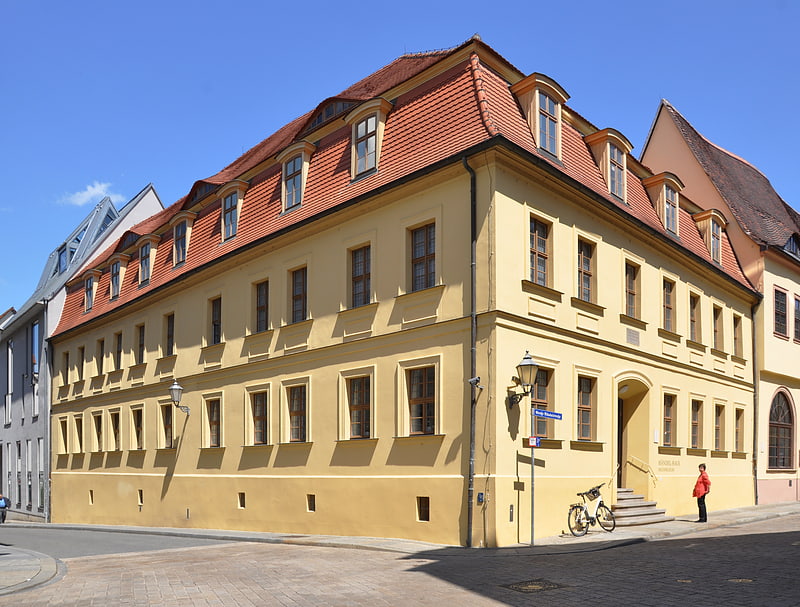
Museum in Halle, Germany. Handel House is a cultural site in Halle in Saxony-Anhalt, Germany. The composer George Frideric Handel was born here in 1685; it is now a museum, and houses a collection relating to the composer and to the musical history of Halle.[3]
Address: Große Nikolaistraße 5, 06108 Halle (Saale) (Stadtbezirk Mitte)
Wilhelm Friedemann Bach House
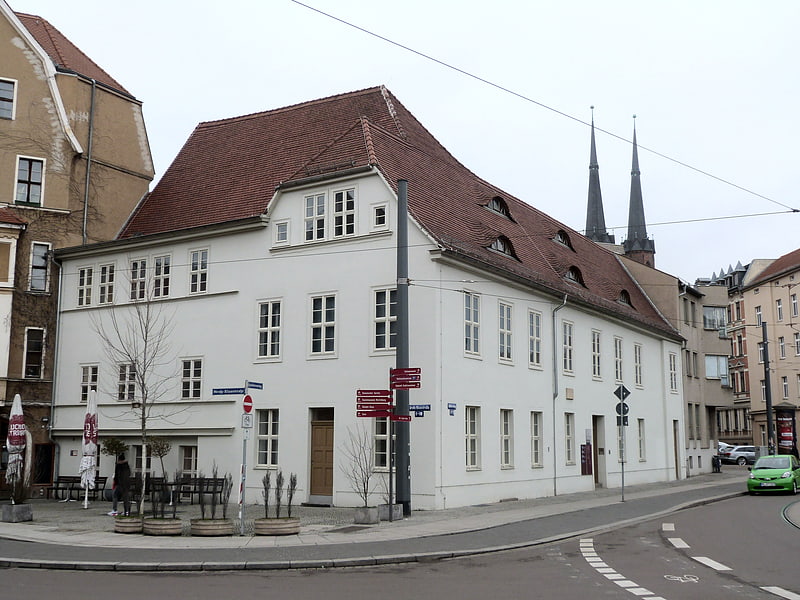
The Wilhelm Friedemann Bach House is a cultural site in Halle in Saxony-Anhalt, Germany. The composer Wilhelm Friedemann Bach, eldest son of Johann Sebastian Bach, lived here during part of his career; the building now has an exhibition about W. F. Bach and other composers who lived in Halle.[4]
Address: Grosse Klausstrasse 12, 06108 Halle (Saale) (Stadtbezirk Mitte)
Burg Giebichenstein University of Art and Design
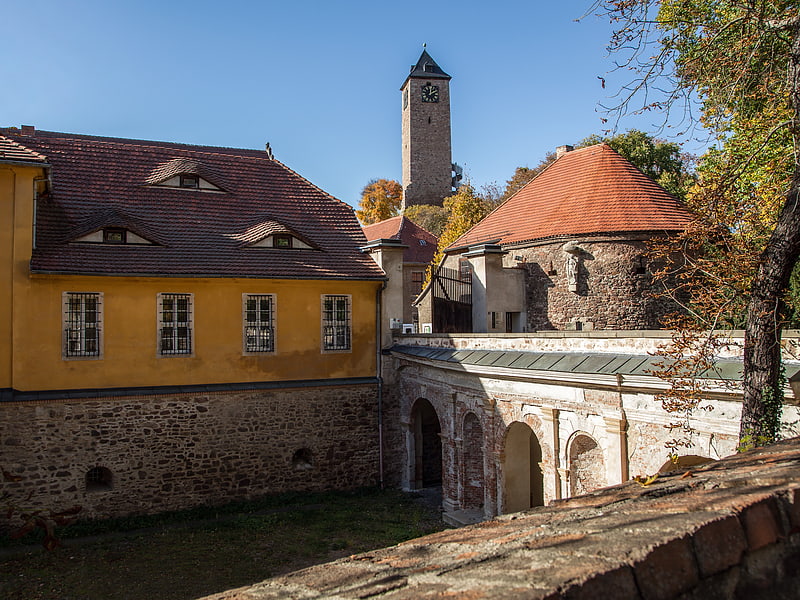
Burg Giebichenstein Kunsthochschule Halle is the university of art and design in Halle an der Saale that was established in 1915. With a student body numbering over 1,000, BURG is one of the largest universities of art and design in Germany. It offers 20 art and design degree programmes in two faculties.
BURG is located on the lower fortress of Giebichenstein Castle above the right bank of Saale River on the city's northern border. Part of the Art campus is on the grounds of the former Hermes print finishing company in north-eastern Halle and the rest is combined with the Design campus on Neuwerk to the east of Mühlgraben, the old water channel for the town's mill.[5]
Burg Giebichenstein
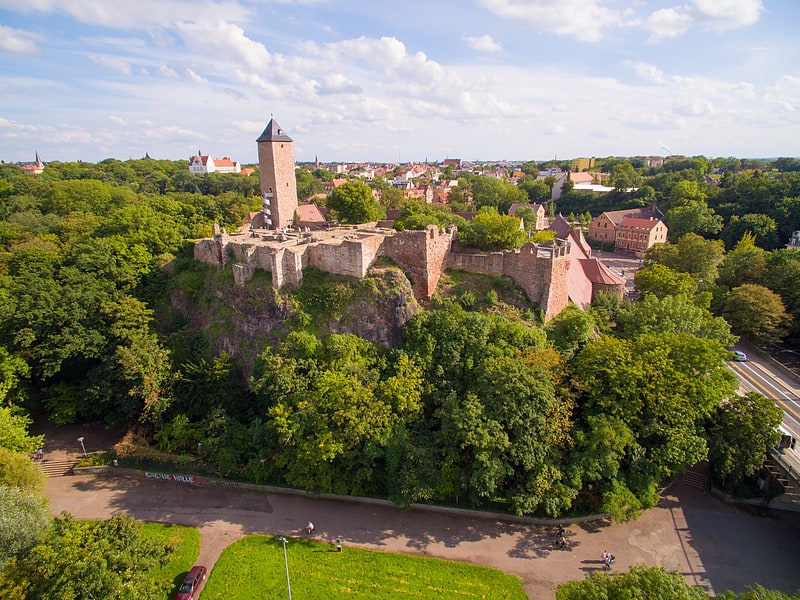
Castle in Halle, Germany. Giebichenstein Castle is a castle in Halle in Saxony-Anhalt, Germany. It is part of the Romanesque Road.
Being a Burgward in the 9th century, the castle became a royal residence of Otto I, Holy Roman Emperor, who gave it to the Archbishopric of Magdeburg which he had established in 968. Halle had practically reached a state of political autonomy in 1263. The same happened with Magdeburg and when the archbishops finally left Magdeburg, after a series of conflicts with the ever more powerful city council, Giebichenstein Castle became their principal residence in 1382, which it remained until the archbishops moved into the newly built Moritzburg (Halle) in 1503.
The lower castle (German: Unterburg) is one of the two campuses of the Burg Giebichenstein Kunsthochschule Halle (Burg Giebichenstein University of Art and Design).[6]
Address: Seebener Str. 1, 06114 Halle (Saale) (Stadtbezirk Nord)
Botanical Garden

Also known as: Botanischer Garten
Botanical garden in Halle, Germany. The Botanische Garten der Martin-Luther-Universität Halle-Wittenberg is an arboretum and botanical garden maintained by the University of Halle-Wittenberg. It is located at Am Kirchtor 3 in the city of Halle, Saxony-Anhalt, Germany, and open daily in the warmer months. An admission fee is charged.
The garden's origins can be traced back to 1698 when Frederick III, Prince Elector of Brandenburg donated parts of his hortus medicus to the university in Halle. By 1749 the garden contained 191 plants species. In 1787 it was enlarged to its present size by Karl Christoph von Hoffmann (1735-1801), university chancellor, in response to activities of garden directors Johann Reinhold Forster (1729-1798), who participated in Captain James Cook's second world expedition, and Philipp Jung Hans Caspar (1736-1798). Towards the end of the 18th century many greenhouses were constructed, and by 1825 the garden contained some 7,000 species. Its tropical greenhouse was built in 1872 with the Victoria greenhouse following in 1902. During the 20th century, additional modern green houses were built and old ones renovated, including the 1994 reconstruction of the Victoria greenhouse. The garden grounds also contain the former university observatory, designed by Carl Gotthard Langhans (1732-1808).
Today the garden contains about 12,000 species, including systematic collections of orchids, bromeliads, carnivorous plants, grass species (especially from the tribe Aveneae), Mammillaria (Cactaceae), Echinodorus (Alismataceae), and Cryptocoryne (Araceae). It also contains an important collection of Central Asian plants, especially from Mongolia, which is believed to be one of the largest such collections outside Russia and Mongolia, and preserves some rare and extinct plants with emphasis on the local region of Saxony-Anhalt, including Artemisia rupestris, as well as exotics such as Carlina diae (Asteraceae) from Crete and Sophora toromiro from the Easter Islands.
The garden is organized into the following major areas:
- Alpine garden with many high mountain plants surrounds a small plant bed with beach and sand dune plants.
- American plants.
- Asian plants, particularly Berberis and Cotoneaster.
- Arboretum, systematically arranged, with very old specimens of Acer campestre, Gymnocladus dioicus, Juglans nigra, Metasequoia glyptostroboides, and Sophora japonica.
- Steppe plants from the East Mediterranean region and Central Asia.
- Systematic garden, organized according to the "System der natürlichen Pflanzenfamilien" of A. Engler.
The garden also contains a number of greenhouses (3,000 m2 total area) including:
- Arid greenhouse - cacti and succulents from the Americas and Africa, with a smaller section dedicated to Madagascar.
- Evergreen plant greenhouse.
- Orangery.
- Tropical greenhouse - lianas, epiphytes and useful plants including banana, coffee, pepper, and vanilla.
- Victoria greenhouse - tropical aquatic plants including mangroves and collections of Echinodorus and Cryptocoryne.
Address: Am Kirchtor 3, 06108 Halle (Stadtbezirk Mitte)
Landesmuseum für Vorgeschichte

Museum in Halle, Germany. The State Museum of Prehistory in Halle is the archaeological museum of the German state of Saxony-Anhalt.
Founded in Naumburg in 1819, it was moved to Halle in 1825, and within Halle to its present location in 1918.
Its collection, comprising more than 15 million items, is among the most extensive and important in Germany. Among its most famous exhibits are the Nebra sky disk (Unetice culture), which has been part of the permanent exhibition since 2008, the Eulau family graves (Corded Ware culture) and the Hornhausen rider stele (Francia).[8]
Address: Richard-Wagner-Straße 9, 06114 Halle (Saale) (Stadtbezirk Nord)
Halloren- und Salinemuseum
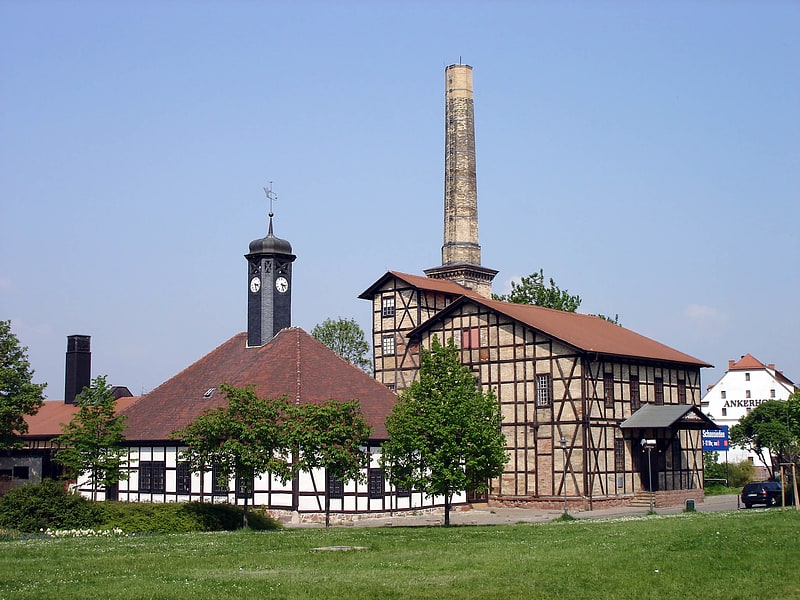
Museum in Halle, Germany. The Technical Hallors and Saline Museum was founded in the buildings of the former Royal Prussian Saline, Halle upon Saale in 1967. Hallors had been members of a brotherhood of salt producers.[9]
Address: Mansfelder Str. 52, 06108 Halle (Saale) (Stadtbezirk West)
Halle Opera House
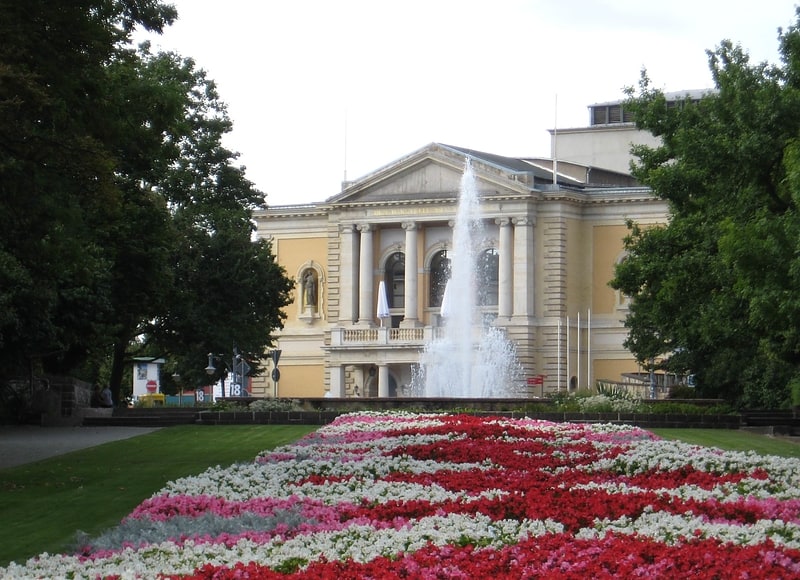
Also known as: Opernhaus Halle
Opera house in Halle, Germany. The Halle Opera House is an opera house in Halle, Saxony-Anhalt. Originally named the Halle Town Theatre, the theatre was built in 1886. A bomb attack on 31 March 1945 destroyed much of the original building. Restorative work ensued a few years later, and the theatre reopened in 1951 under the name Landestheater Halle. In January 1992 it was renamed to its current title. The theatre is currently used for performances of opera, ballet, and orchestral concerts. It is also the main performance venue for the annual summer Handel Festival held in the city.[10]
Address: 24 Universitätsring, Halle (Stadtbezirk Mitte)
Kulturinsel Halle

The Kulturinsel Halle is a building and cultural complex in Halle. In addition to the Neues Theater Halle, it houses the Puppentheater Halle, the studio, the "Schaufenster" and a library. Furthermore, it includes the gastronomic establishments Café nt and Strieses Biertunnel.[11]
Francke Foundations

Also known as: Franckesche Stiftungen
Archive in Halle, Germany. The Francke Foundations, also known as Glauchasche Anstalten were founded in 1695 in Halle, Germany as a Christian, social and educational work by August Hermann Francke
The Francke Foundations are today a non-profit educational organization housed in a complex of historic buildings. The Francke Foundations includes three kindergartens, a children’s creativity centre, four schools, a House of Generations, a youth workshop, a bible centre, traditional commercial enterprises, archives, libraries, museums, and university and non-university research facilities. More than 4,000 people learn, teach, work and live in the Francke Foundations.
The Francke Foundations have been on the German proposal list as a UNESCO World Heritage Site since 1999.[12]
Address: Franckeplatz 1, 06110 Halle (Saale) (Stadtbezirk Mitte)
Beatles Museum
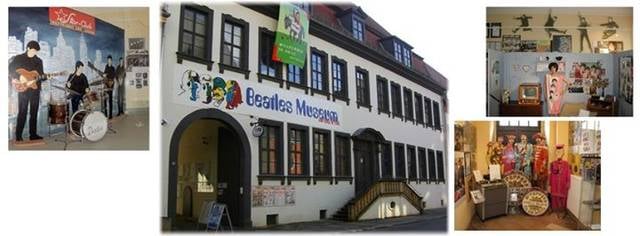
Museum, Specialty museum
Address: Alter Markt 12, 06108 Halle (Saale) (Stadtbezirk Mitte)
Lokschuppen4 - DB-Museum

The DB Museum Halle is a branch of the Nuremberg Transport Museum in the city of Halle.
Address: 39 Volkmannstraße, Halle (Stadtbezirk Ost)
Old Town Hall
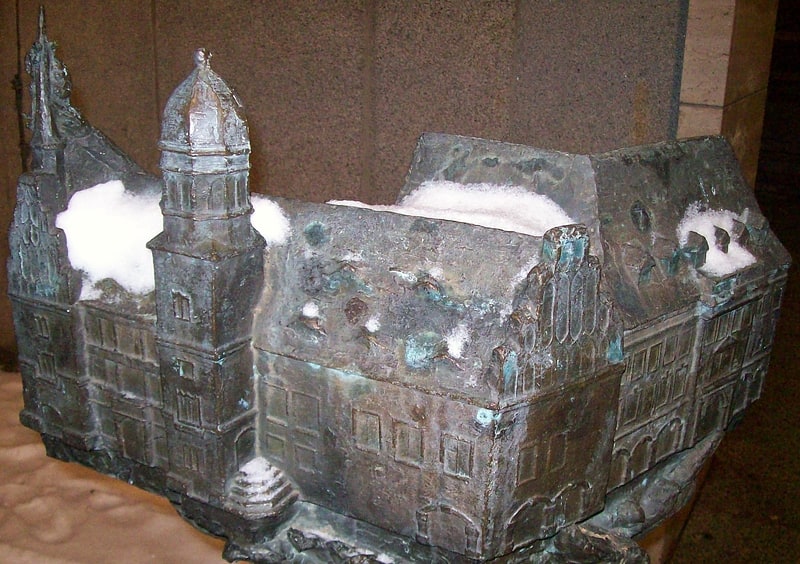
Also known as: Altes Rathaus
"Old Town Hall" was a town hall in Halle, Germany.[13]
"Rechenwerk"
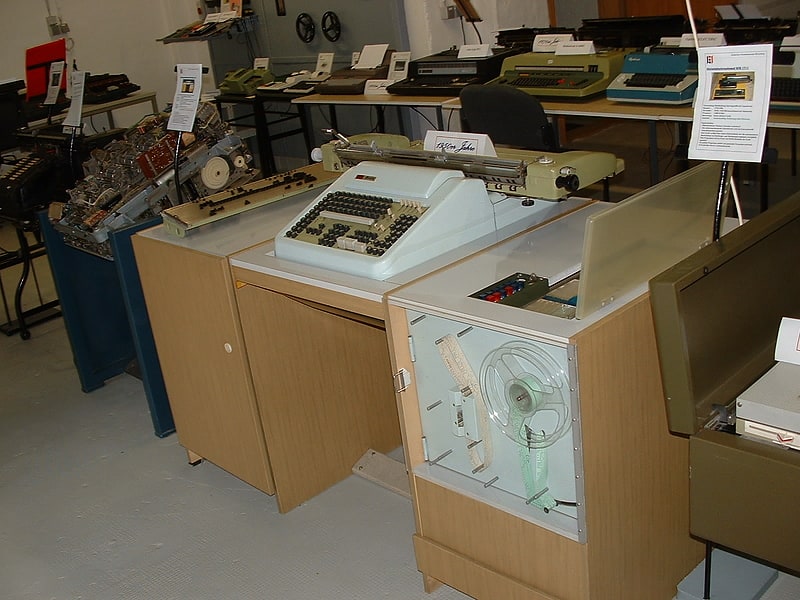
Museum
Address: 11 Saalfelder Straße, Halle (Stadtbezirk Ost)
Leipziger Straße
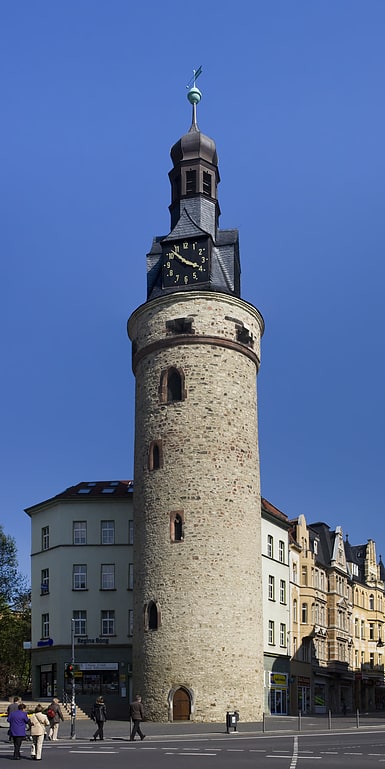
Observation decks and towers
Address: Leipziger Straße, Halle (Stadtbezirk Mitte)
Red Tower
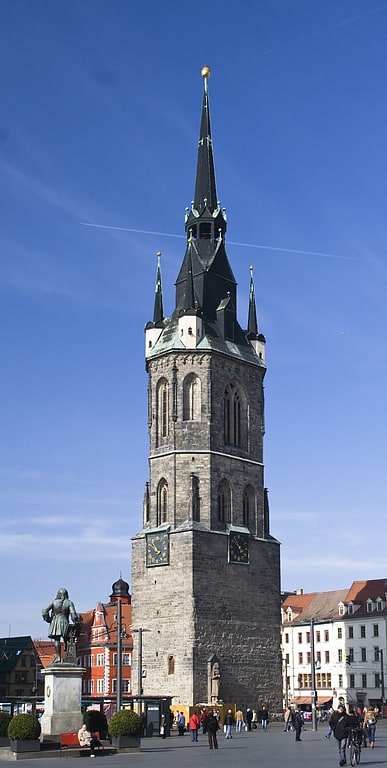
Also known as: Roter Turm
The Red Tower is part of the landmark of the city of Halle. This it forms together with the four towers of the Market Church of Our Lady. Halle is often called the City of Five Towers because of the distinctive silhouette of these two buildings. The tower burned out on April 16, 1945 due to artillery fire and lost its characteristic spire. Except for the tower reconstruction, it was restored.
Address: Markt Platz, Halle (Stadtbezirk Mitte)
Martin Luther University of Halle-Wittenberg
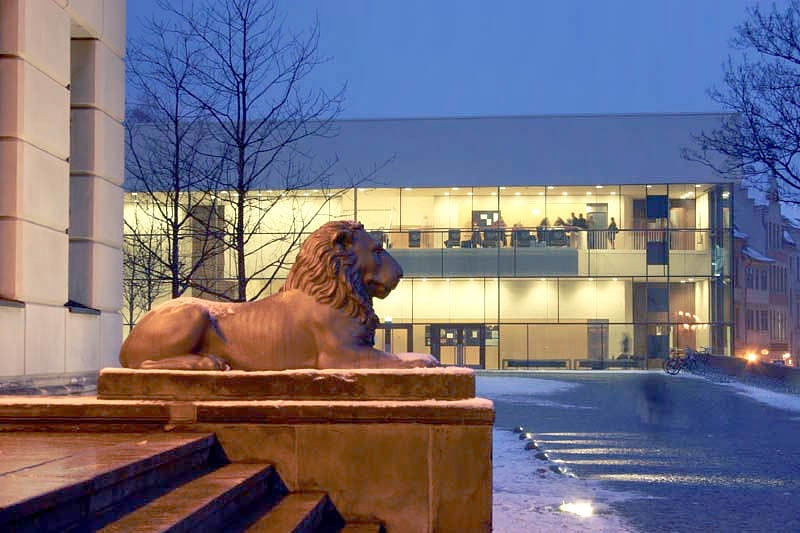
Also known as: Martin-Luther-Universität Halle-Wittenberg
Public university in Halle, Germany. Martin Luther University of Halle-Wittenberg, also referred to as MLU, is a public, research-oriented university in the cities of Halle and Wittenberg and the largest and oldest university in the German State of Saxony-Anhalt. MLU offers German and international courses leading to academic degrees such as BA, BSc, MA, MSc, doctoral degrees, and Habilitation.
The university was created in 1817 through the merger of the University of Wittenberg (founded in 1502) and the University of Halle (founded in 1694). MLU is named after Protestant reformer Martin Luther, who was a professor in Wittenberg. Today, the university campus is located in Halle, while Leucorea Foundation in Wittenberg serves as MLU's convention centre. Both Halle and Wittenberg are about one hour from Berlin via the Berlin–Halle railway, which offers Intercity-Express (ICE) trains.[14]
Address: Universitaetsplatz 10, 06108 Halle (Saale) (Stadtbezirk Mitte)
Leopoldina
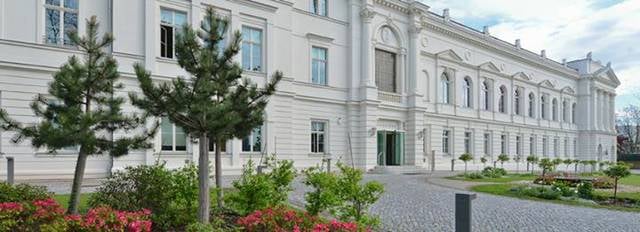
Address: Jägerberg 1, Halle (Stadtbezirk Mitte)